To overcome the limitations of old systems and keep up with changes in the digital age, cloud application modernization is seen as the fastest shortcut to helping businesses survive and succeed. Research shows that cloud modernization can increase revenue by 28% and reduce IT costs by 39%.
To understand how application cloud modernization can support business growth, this article will explore the concept of cloud modernization, its benefits and challenges, and the methods businesses can use to fully leverage the cloud environment’s potential.
What is Cloud Application Modernization?
Cloud application modernization is a multi-step process focused on updating and enhancing on-premises infrastructure, applications, and data sources, transforming them into cloud-based architecture and environments. This allows businesses to use modern techniques to increase flexibility, scalability, and cost-efficiency.
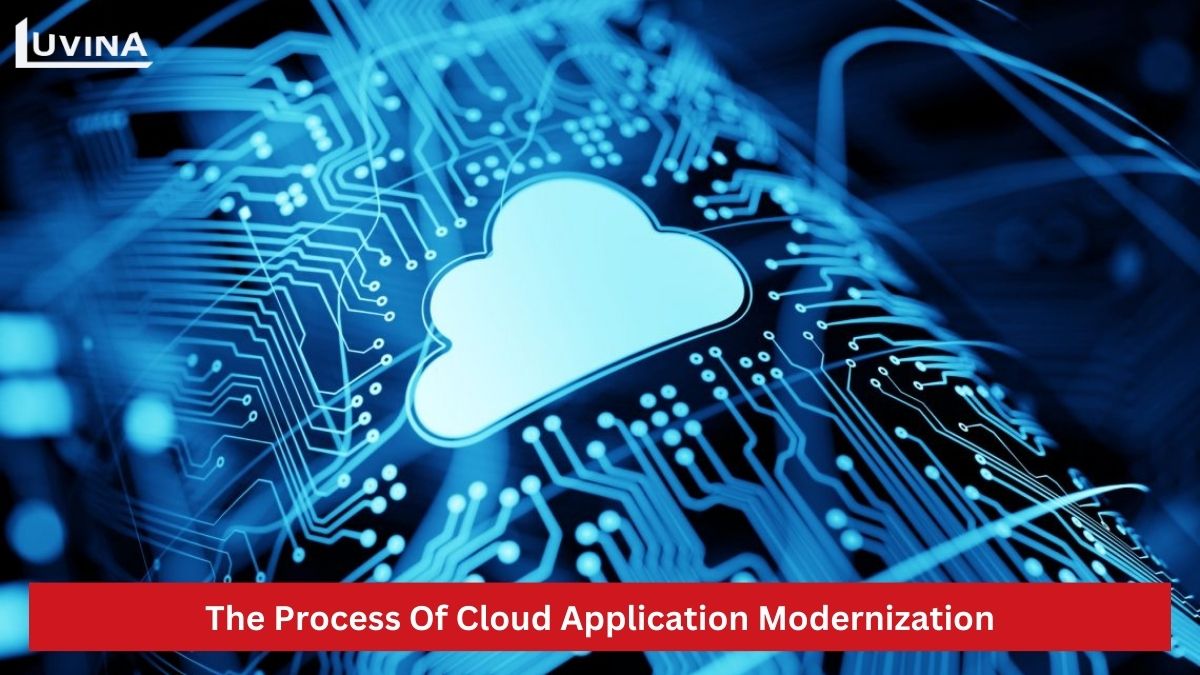
Cloud modernization often needs to be clarified with cloud migration. However, they are completely different concepts. Compared to cloud migration, cloud modernization is a more complex process, almost like rewriting the entire application. In contrast, cloud migration involves partially modifying the application just enough to meet basic cloud requirements. Application cloud modernization offers businesses long-term performance improvements.
Benefits of Cloud App Modernization
Cloud migration can have many cost and time advantages, but it doesn’t allow businesses to fully leverage the cloud environment’s potential. In contrast, cloud application modernization, a more complex and time-consuming process requiring more specialized expertise, offers many long-term benefits. Here are some key benefits of cloud modernization.
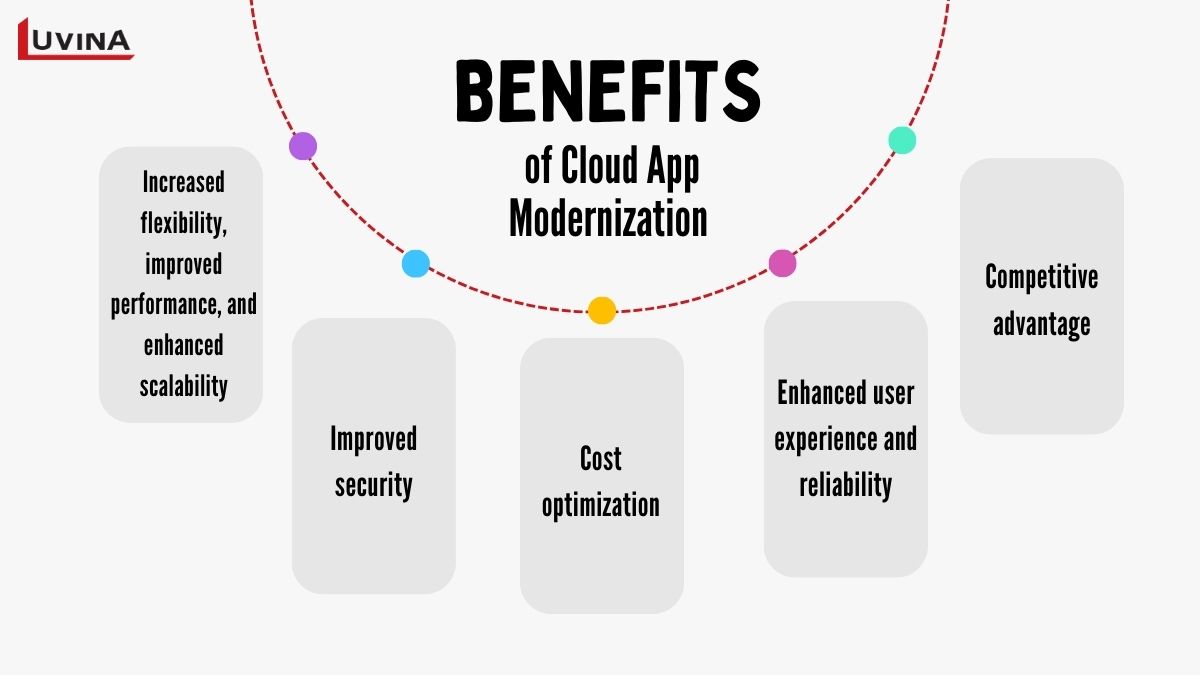
- Increased flexibility, improved performance, and enhanced scalability: Legacy applications often struggle with high-performance demands and limited scalability. Cloud application modernization can boost application performance and enable them to handle growing workloads more effectively.
- Improved security: Older applications typically have outdated security components, making them vulnerable to security breaches. Modernization enhances application security and ensures compliance with legal regulations.
- Cost optimization: While cloud application modernization may require significant upfront costs, it is cost-effective in the long run. In contrast, maintaining legacy systems and traditional applications can be very expensive.
- Enhanced user experience and reliability: Modernized applications offer a more user-friendly interface and better responsiveness. New features provide greater convenience for users.
- Competitive advantage: Businesses that modernize their cloud applications are often a step ahead of their competitors. They can quickly adapt to market changes and seize new opportunities, leading to more efficient growth.
Challenges in Cloud App Modernization
On the other hand, cloud application modernization also presents several challenges for businesses, including the following:
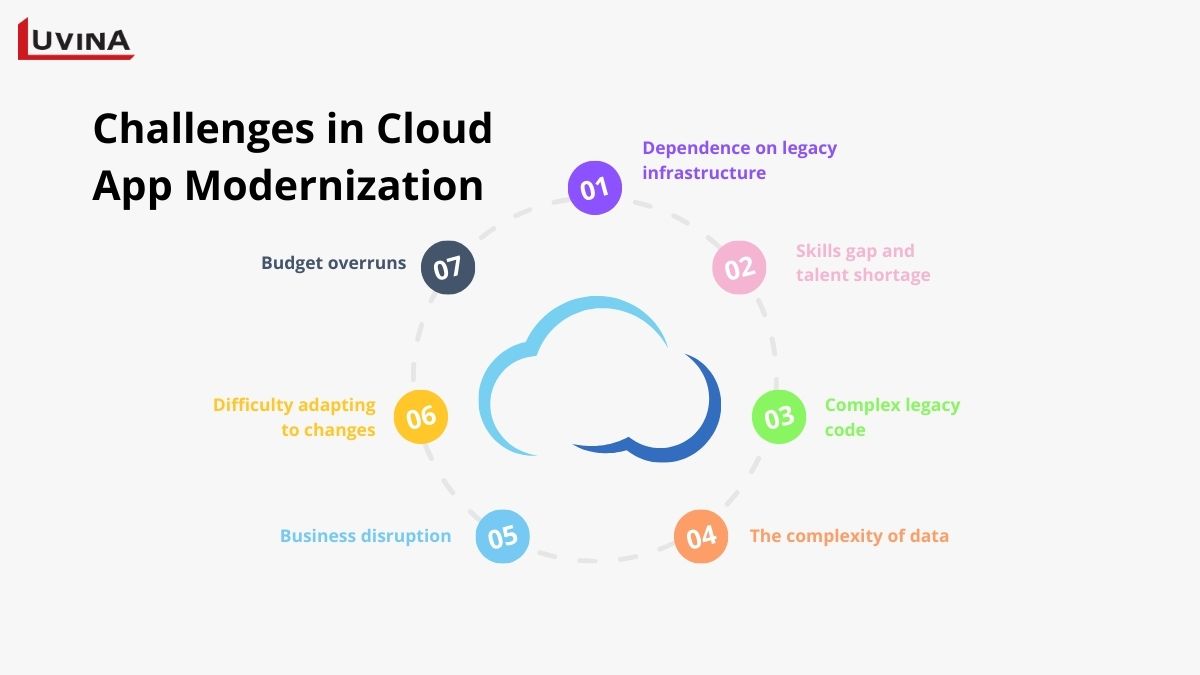
- Dependence on legacy infrastructure: Many older applications rely on outdated infrastructure or dependencies that are no longer compatible with modern environments.
- Skills gap and talent shortage: There is a significant shortage of highly skilled professionals in the field of modern digital technologies. Thus, businesses deciding to modernize their cloud applications will face a considerable challenge in finding IT experts proficient in areas such as containerization, cloud computing, DevOps, etc.
- Complex legacy code: Older codebases are often complex and poorly documented. This makes it difficult for IT professionals to understand and update these codes during the modernization process.
- The complexity of data: Modernizing cloud applications often involves migrating data from old systems to new platforms or integrating data with external platforms. This process poses challenges related to data consistency and compatibility.
- Business disruption: Modernization is a complex and time-consuming process. During cloud application modernization, businesses are likely to face disruptions in their operations, especially in the initial stages.
- Difficulty adapting to changes: Stakeholders, employees, and management may struggle or resist adapting to the changes brought by modernization, posing a significant challenge.
- Budget overruns: The modernization process can be heavily impacted if the company lacks sufficient budget. In such cases, many companies may have to compromise by reducing the quality or scope of the application cloud modernization project.
6 Key Approaches of Cloud Application Modernization
There are many tools and methods for cloud application modernization, each suited to specific requirements. Among these, a set of 6 tools known as the 6Rs can help businesses achieve optimal results. Below are detailed descriptions of the 6Rs for cloud application modernization.
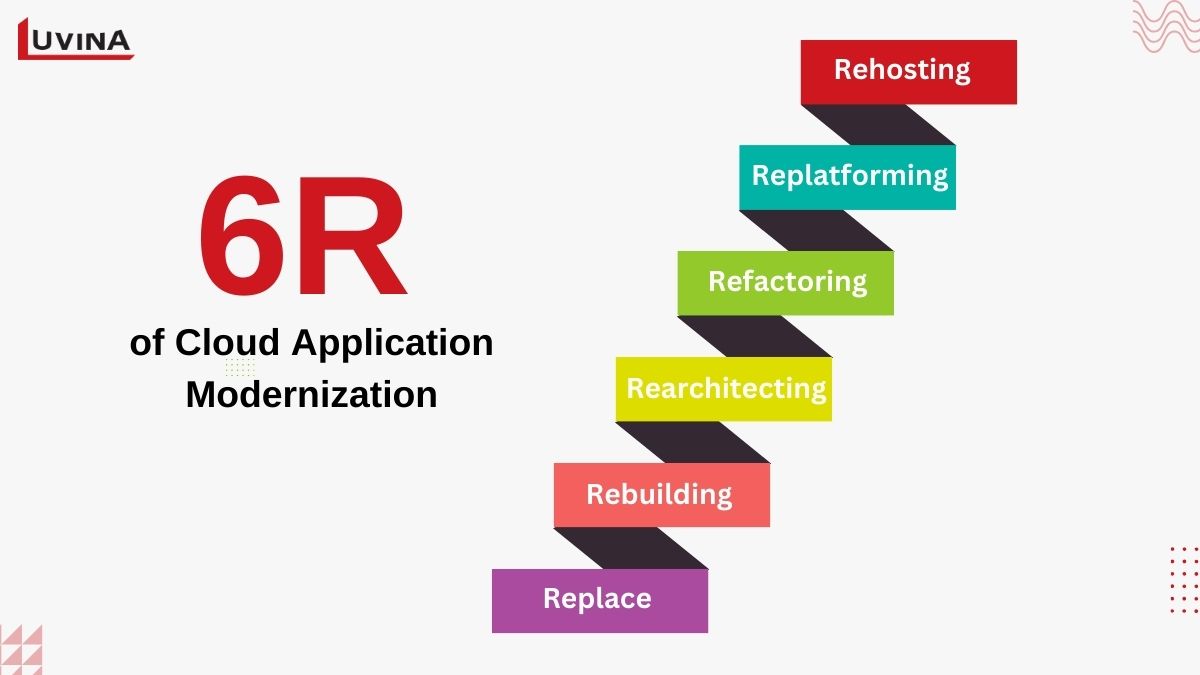
1. Rehosting
This method involves moving an application from one environment to another with minimal changes to its architecture or functionality. It is often chosen when the current hosting environment is outdated or too costly, and the business wants to shift to a more modern, cost-effective platform.
Suitable for:
- – Businesses with applications run on old infrastructure that is expensive to maintain.
- – Organizations undergoing mergers or acquisitions.
- – Companies are seeking to improve the reliability and availability of their applications.
2. Replatforming
This approach to cloud application modernization involves moving an application to a new platform with minimal changes to its architecture. The goal is to leverage the benefits of the new platform without redesigning the entire application.
Suitable for:
- – Businesses with applications are facing performance or scalability issues due to limitations of the current platform.
- – Companies are looking to change their technology stack or infrastructure strategy.
- – Organizations need their applications to comply with new regulatory or security standards.
3. Refactoring
This method involves restructuring the existing code or components of an application to improve its internal structure, readability, and maintainability without changing its external behavior.
Suitable for:
- – Applications with complex, hard-to-maintain code due to accumulated technical debt.
- – Enhancing and adding new features to the application.
- – Applications with poor performance or scalability due to inefficient code.
4. Rearchitecting
Also known as redesigning, this method involves making significant architectural changes to an application, often transitioning from a monolithic architecture to microservices. This aims to improve scalability, performance, and reliability.
Suitable for:
- – Applications are unable to handle increased workloads and traffic.
- – Applications using outdated technology or not meeting current industry standards.
- – Applications with too many updates and bug fixes.
5. Rebuilding
This cloud application modernization approach entails recreating one or more components of an application or rebuilding the entire application from scratch.
Suitable for:
- – Applications relying on legacy systems that hinder organizational growth.
- – Applications need a shift in core purpose or architecture due to excessive technical debt.
6. Replace
This method involves cloud application modernization by removing one or more components of the existing application or replacing the entire application with a new one.
Suitable for:
- – Components within the application that are outdated or no longer meet current requirements.
- – The architecture or underlying framework of the application is no longer sustainable or effective.
- – Businesses are dependent on an application from a vendor that no longer aligns with their business goals.
Conclusion
In the rapidly advancing landscape of technology and engineering, cloud application modernization is the most direct path for businesses to achieve their goals, maintain smooth operations, and save costs without having to rebuild critical applications from scratch.
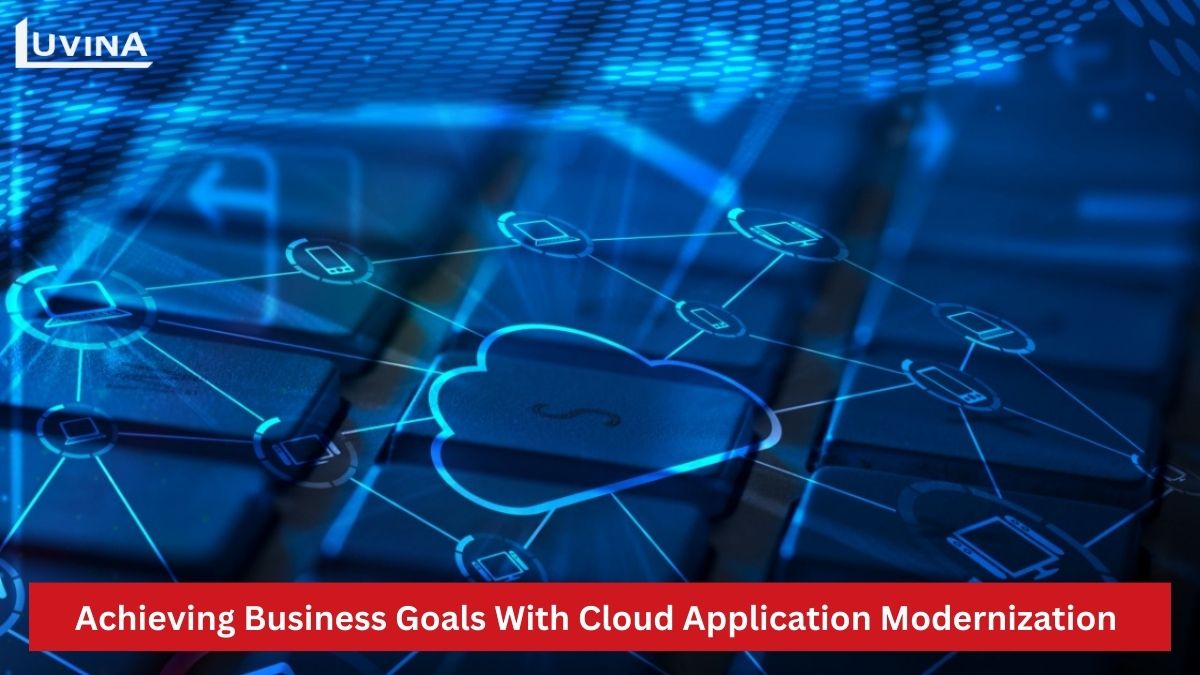
Application cloud modernization can be a time-consuming and demanding process. However, businesses can initiate the modernization process smoothly and reap long-term benefits with a well-planned strategy and collaboration with reputable cloud service providers.
Why Partner with Luvina for Cloud App Modernization?
If your business is in the early stages of planning for application cloud modernization and is seeking a reliable partner, Luvina would be an ideal choice. We are a leading IT company in Vietnam with a strong reputation, providing high-quality service with ISO 9001 certification. Luvina also has over 750 highly skilled developers capable of adapting to the latest technologies and scaling project requirements flexibly.
Our cloud services at Luvina focus on cloud-native application development, cloud operation, cloud migration, and cloud modernization. Importantly, our cloud services uphold the highest security standards, including ISO 27001, ensuring absolute confidentiality and security of customer data and IPs throughout our collaboration.
Contact Luvina today for a detailed consultation and discover how we can help modernize your cloud applications seamlessly.









Read More From Us?
Sign up for our newsletter
Read More From Us?
Sign up for our newsletter